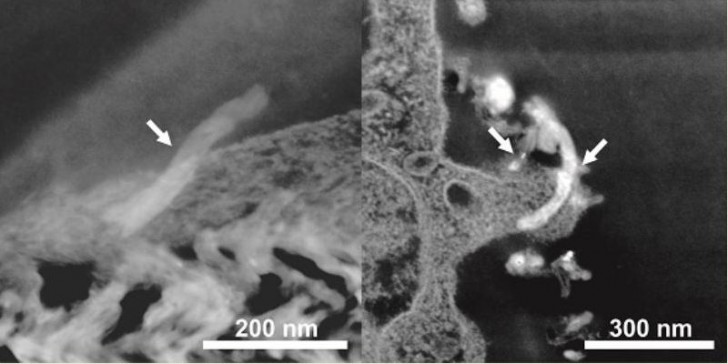Ability of carbon nanotubes (CNTs) to cross the Blood-Brain Barrier (BBB) observed directly

A research published in the journal “Biomaterials” studies the interaction of carbon nanotubes and the blood-brain barrier through two different proceedings. The study was carried out by the Institute of Pharmaceutical Science at the King's College London and members of the Institut Català de Nanociència i Nanotecnologia (ICN2, Electron Microscopy Division), who participated in the electron microscopy characterization studies. The study was the first to directly observe the ability of functionalized CNTs to cross the Blood-Brain-Barrier, the authors state.
The study investigates the ability of amino-functionalized multi-walled carbon nanotubes (MWNTs-NH3+) to cross the Blood-Brain Barrier by two ways: in vitro using a co-culture model, and in vivo following a systemic administration of radiolabeled functionalized MWNTs.
A further investigation, carried out at ICN2, has allowed the corroboration of the results and the better understanding of the processes. Images by Transmission Electron microscopy (TEM) and Scanning Transmission Electron Microscopy (STEM) showed that the cells or the tight junction assemblies were not damaged, that the interaction of the MWCNTs and the plasma membrane of the endothelial cells took place after 4 h of incubation and confirmed that the functionalized MWNTs crossed the endothelial cells. Further images showed that the graphitic structure of the MWNTs-NH3+ was preserved following uptake into endothelial cells. Applying this method, the study was able to show for the first time the whole 48-hour transport process of the MWCNTs
To sum up, researchers were able to demonstrate, for the first time, the ability of MWNTs-NH3+ to cross the Blood-Brain Barrier in vitro with low voltage STEM imaging, thus providing solid evidence using electron microscopy. This research also stands out because its results could lead to the use of CNTs in new applications. For instance, they could work as nanocarriers for delivery of drugs and biologics to the brain, after systemic administration.
Study: Kafa H et al.: The interaction of carbon nanotubes with an in vitro blood-brain barrier model and mouse brain in vivo. Biomaterials 53(437-452), Juni 2015, doi:10.1016/j.biomaterials.2015.02.083
Source: ICN2
Image Source: Translokation von MWNTs-NH3+ durch die Endothelzellmembran. (Foto: ICN2 2015)